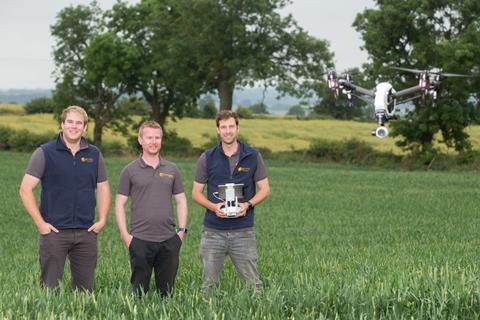
Farmers have long been focused on boosting yields and driving efficiencies, but now, as agriculture enters the digital age, their attention to detail has reached levels that would once have been unimaginable.
The so-called Third Green Revolution is creating opportunities for growers to manage crops in a much more sophisticated and precise way. And the ability to harness big bata is spawning novel techniques to get the most from every square metre of field, while reducing the use of fertilisers, pesticides and water, thereby limiting the impact on the environment.
“Precision farming technologies unleash a great potential to make farming more sustainable,” says Jerome Bandry, secretary general of European agricultural machinery industry body CEMA. “Targeted technologies can help in reducing the impact of environmental challenges… significant progress has been made in the optimisation of pesticide application”.
The meticulous monitoring involved is impressive. Growers can now use GPS satellites to accurately guide tractors and harvesters; boom section control systems and sensors allow farmers to apply the right amount of product where and when it is needed; wind speed can be measured and accounted for when applying fertiliser; and soil can be scanned to identify factors that might limit yield.
While this kind of technology is based upon precise algorithms and data management – machinery suppliers now have their own IT wunderkinds to find new ways to make the most of the data – the physical machinery involved is also of central importance. This is what collects the data in the first place, and new machinery is continually being developed to test the soil, identify pests, and apply agrochemicals in a more precise and targeted way than ever before.“Lately, the increase of connectivity between machines and the exchange of data has taken centre stage,” says Bandry. “Data collected by the machines can increase the efficiency of farm operations.”
Here is a breakdown of some of the latest machinery available to farmers in the UK:
Drone services by Agrovista
With a number of years’ experience using multi-rotor and fixed-wing drone platforms, Agrovista now operates a fleet of drones flown by Civil Aviation Authority-approved drone operators with the PfCO certificate.
Drones allow growers to monitor plant health, plant population and plant size more accurately. “We have been developing specific plant count and sizing algorithms for use in salad and veg crops to aid management decisions,” says Agrovista’s precision specialist Jack Harris. “The ability to make better management and harvest decisions can save a lot of money in wasted produce, man hours and lost revenue from not delivering the correct quantity.”
The drones can also be used to assess damage in crops and give an estimated area of loss due to pests or diseases such as club root, and this can help justify treatments for future years.
The Veris U3 soil scanner by Agrovista
An updated version of the Veris MSP3 launched by Agrovista three years ago, the Veris U3 measures various soil properties, such as soil texture, organic matter, pH and topography. From this a grower can determine water capacity zones, nitrogen leach risk zones, growing environment zones and seed map zones.
The data gathered by the machine can be compared with yield maps to identify factors that might limit yield and develop seed plans or spread manure accordingly.
Detailed mapping of soil pH is particularly useful in vegetable and high-value crops, allowing agronomists to locate hotspots in fields and treat for clubroot before any crops have been drilled.
ArgusTwin fertiliser monitoring system by Amazone
Boasting 14 radar sensors, the ArgusTwin monitors how fertiliser leaves the spreading disc of two of Amazone’s spreaders: the mounted ZA-TS and the trailed ZG-TS.
According to the German machinery supplier, whose UK base is just south of Doncaster, an optimum spread pattern is maintained, regardless of whether you are driving across a slope, there has been a change in batch quality, or there are weather conditions that could affect how a fertiliser flows.
The radars monitor the “throw angle” and if any change is detected, the spreader alters the drop point where the fertiliser is delivered onto the disc, bringing the spread pattern back to its optimum. The system was released in 2017 and is being used at vegetable farms in Yorkshire and Lincolnshire.
WindControl system by Amazone
Operating alongside the ArgusTwin, WindControl uses a digital anemometer to measure the speed and direction of the wind. This data is fed into the job computer on the spreader and, via an algorithm, a counter response is applied to compensate for the effects of the wind when a fertiliser is spread.
By way of example, if the wind is blowing at 90 degrees to the spreader, the fertiliser being thrown into the wind wouldn’t travel as far as it should, explains Amazone product manager Peter Henson. “WindControl would tell the spreader to increase its disc speed to the side that is throwing into the wind to give the fertiliser more energy.” The system is being tested on five spreaders this year, with a view to a full release in 2019.






No comments yet